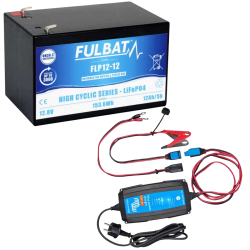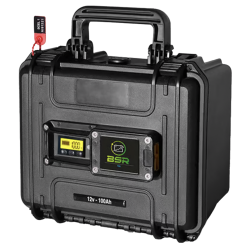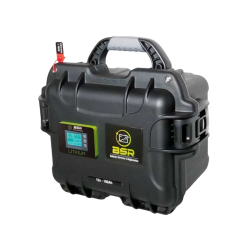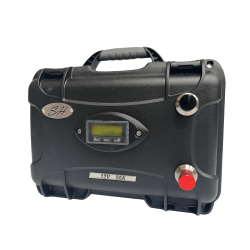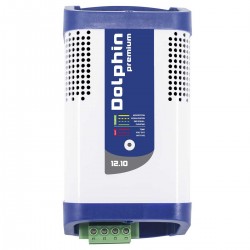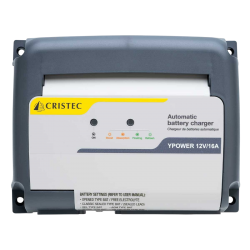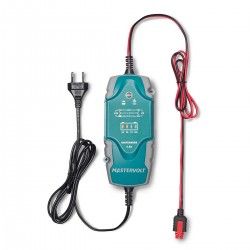Sommaire
CONSEILS et astuceS pour l'entretien de votre moteur
Votre moteur électrique Minn Kota est un outil essentiel sur votre bateau. Il est régulièrement soumis à une utilisation intensive, peut subir des chocs : souches, rochers, quais… et fonctionne souvent pendant des heures.
Quelque soit votre modèle de moteur électrique Minn Kota, c’est en faisant des entretiens réguliers que vous pourrez allonger sa durée de vie et maintenir les performances de votre matériel pour continuer à en profiter encore longtemps.
Vous découvrirez dans ce petit guide quelles sont les pannes les plus fréquentes de votre moteur électrique, comment démonter et nettoyer votre moteur géostationnaire et des conseils et astuce pour maintenir votre moteur en bon état tout au long de son utilisation. Ainsi vous saurez comment entretenir votre moteur électrique Minn Kota !
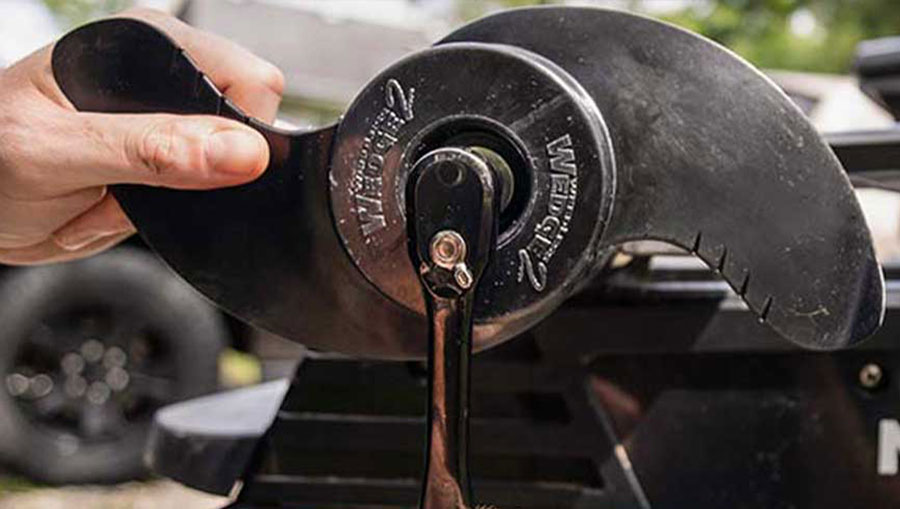
CONSEIL ET ASTUCE POUR L'ENTRETIEN DE VOTRE MOTEUR
En faisant des entretiens réguliers, vous pourrez allonger la durée de vie et maintenir les performances de votre matériel pour continuer à en profiter encore longtemps.
Vous découvrirez dans ce petit guide quelles sont les pannes les plus fréquentes de votre moteur électrique, comment démonter et nettoyer votre moteur géostationnaire et des conseils et astuce pour maintenir votre moteur en bon état tout au long de son utilisation.
Qu'est ce qu'un moteur électrique avant ?
moteur électrique avant ou géostationnaire
Un moteur avant Minn Kota ou Trolling Motor en anglais (moteur à la traine) est un type de moteur électrique pour bateaux qui est fixé à l’avant du bateau et utilisé pour le propulser dans l’eau. Ce type de moteur peut s’installer sur de nombreux modèles de bateaux, bateau à moteur, barque de pêche , bass boat etc…
La caractéristique « géostationnaire » signifie que le moteur est conçu pour maintenir une position fixe, même lorsque les courants ou les vents changent. Cela signifie que le moteur peut maintenir votre position sur l’eau sans que vous ayez à constamment ajuster le moteur. Ce système est particulièrement utile pour la pêche, car il vous permet de rester sur un spot précis et de cibler les poissons qui s’y trouvent.
Le moteur avant minn kota géostationnaire Minn Kota peut être piloté de différentes manières en fonction de son modèle et de ses fonctionnalités. En général, il est équipé d’une télécommande sans fil.
Pour utiliser le moteur, vous pouvez régler les vitesses et la direction du moteur à l’aide des commandes disponibles. La plupart des modèles disposent d’un système de contrôle de la vitesse et de la direction avec des boutons, ou des pédales filaires ou sans fils. c’est le cas du Minn Kota Terrova 55 lbs, un des best-sellers de la marque. Pour en savoir plus sur les moteurs électriques, et faire le bon choix, consultez notre guide d’achat sur les moteurs électriques, pour savoir comment l’entretenir, les pannes fréquentes et en prendre soin, lisez la suite !
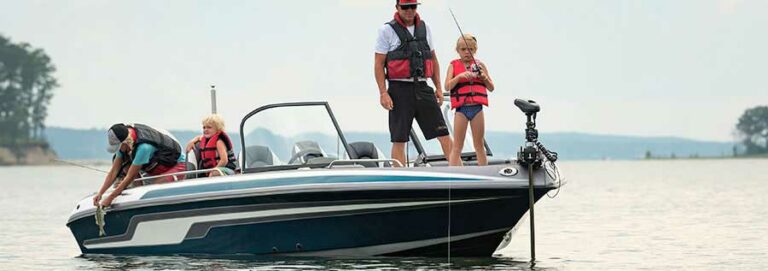
Les problèmes de batterie
VÉRIFICATION DES CONNEXIONS DE LA BATTERIE
Les mauvaises connexions aux batteries sont l’une des sources les plus courantes des problèmes de fonctionnement des moteurs.
Tous les moteurs Minn Kota nécessitent une connexion dédier pour fonctionner efficacement que ce soit en 12 Volts ou en 24 Volts. Bien que cela ne prolonge pas nécessairement la vie de votre moteur, vérifier les connexion empêche les problèmes indésirables pendant votre temps sur l’eau.
Avant toutes choses il faut savoir qu’un moteur nécessite une batterie spécifique à l’usage maritime, et d’une puissance suffisante pour maintenir votre moteur électrique et vos autres appareil en marche durant toutes la session. Les batteries les plus couramment utilisées pour alimenter les moteurs électriques sont les batteries au plomb-acide souvent, mais il existe également des options plus légères et plus durables, telles que les batteries lithium-ion. La plupart des moteurs Minn Kota fonctionnent avec une tension de 12, 24 ou 36 volts. Il est important de choisir une batterie ayant la même tension que votre moteur.
L’ampérage, quant à lui, mesure la quantité d’électricité que la batterie peut fournir pendant une période donnée. Les batteries ont souvent une capacité exprimée en ampères-heures (Ah). Plus la capacité est élevée, plus la batterie peut fournir d’électricité pendant une longue période. Vous trouverez tout type de batterie sur notre site Comptoir Nautique.
Pour entretenir sa batterie et avant chaque départ nous vous conseillons de vérifier la présence de corrosion sur les bornes de la batterie et les fils électriques. Nettoyez-les rapidement avec du papier de verre fin ou un chiffon et remplacez ci besoin les fils corrodés.
Une fois nettoyé, il est conseillé de graisser généreusement les connexions avec une graisse silicone.
Il est également important de vérifier tous les points de connexions supplémentaires.
- Le disjoncteur thermique.
- La prise de démontage rapide.
Il est nécessaire de faire ces vérifications environ toute les 3 à 4 sorties pour assurer la longévité de l’installation.
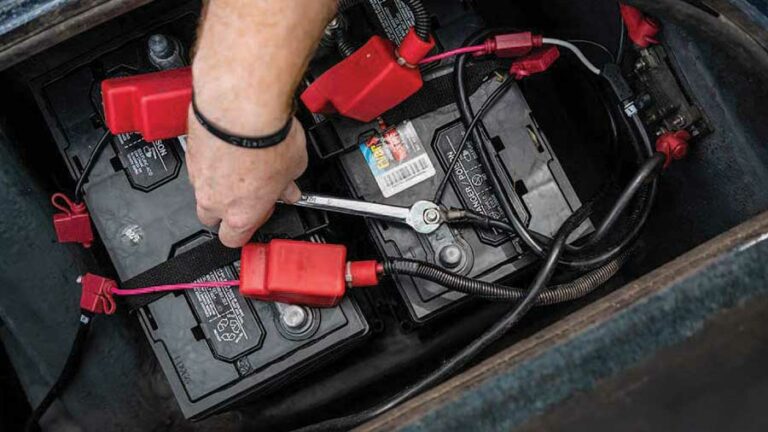
CHARGE OPTIMALE DES BATTERIES MOTEUR
Le système électrique composé d’une ou plusieurs batterie l’élément clef pour le bon fonctionnement de votre moteur électrique Minn Kota. Pour des performances optimales du moteur, et votre autonomie sur l’eau, et il est vital de recharger les batteries dès que possible et après chaque utilisation. Il est donc nécessaire de remettre la batterie à pleine charge avant utilisation.
Quelques batteries et chargeurs sur Comptoir Nautique
Lithium case BSR Eco LifePo4 12V-100A
- -€75.08
Lithium Ion 12V case
- -€20.08
- -€8.33
Premium 12V battery charger
- -€43.42
Ypower 12V battery charger
- -€16.75
Entretien de l'hélice
VÉRIFICATION ET NETTOYAGE DE L’ARBRE D’HÉLICE
Lors de l’utilisation, il arrive fréquemment que du fil de pêche (tresse ou nylon) algues et autres, arrivent à passer derrière l’hélice du moteur.
Il est impératif de démonter celle-ci très régulièrement et de retirer les différents éléments présents afin de préserver le joint d’étanchéité d’arbre d’hélice.
Débranchez l’alimentation, retirez votre hélice bateau et enlevez toute la végétation et les fils qui ont été enroulés autour de l’arbre de l’hélice du moteur Minn Kota.
Dégagez et nettoyez si besoin pendant la sortie. Retirez l’hélice et inspectez l’arbre d’hélice après quelques utilisations – cela ne prend qu’une minute.
Lors du montage prenez soin de bien serrer l’hélice et les différents éléments du moteur afin d’éviter les vibrations
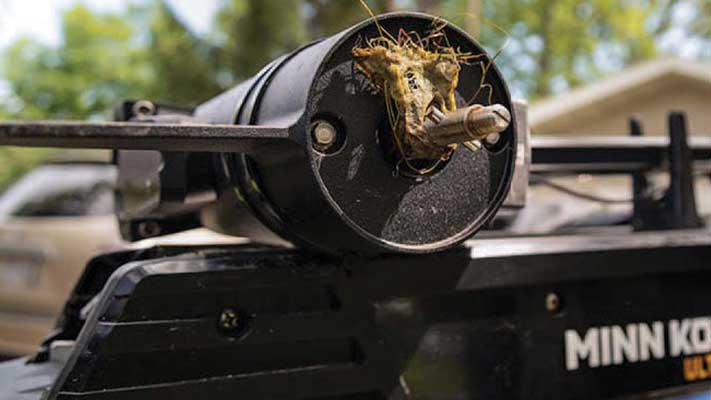
RETRAIT ET INSPECTION DE LA GOUPILLE D’HÉLICE
Pendant que votre Hélice est démontée, profitez-en pour vérifier l’usure de la goupille d’hélice ou pour vérifier si elle n’est pas pliée. Si la goupille est pliée ou abimé, remplacez-la par une goupille d’origine Minn Kota. C’est une vérification à effectuer 2-4 fois par an ou plus selon la fréquence à laquelle vous pêchez.
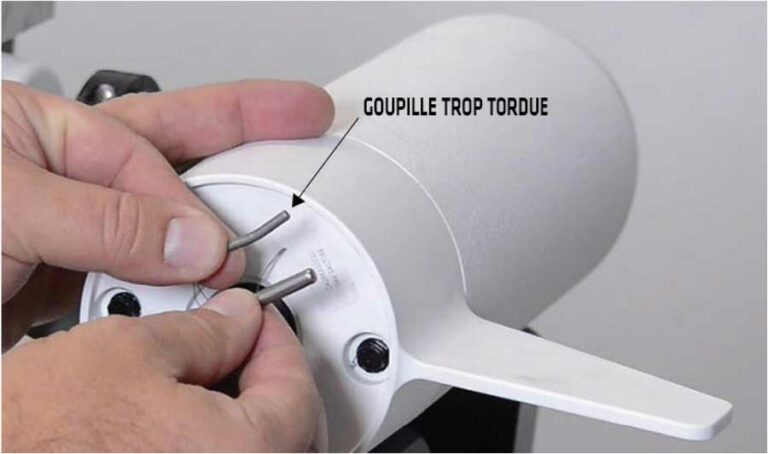
Vérification et entretien de l'hélice anti herbe
Après un choc, il est possible que le bord d’attaque de votre hélice soit abimé.
Si cela se produit, vous pouvez lisser les lames d’appui en les ponçant avec du papier de verre très fin.
Si l’hélice est trop abimée, il est important de la remplacer.
Cette manipulation est à faire une fois par an ou après un choc (roche, branche, fond …)
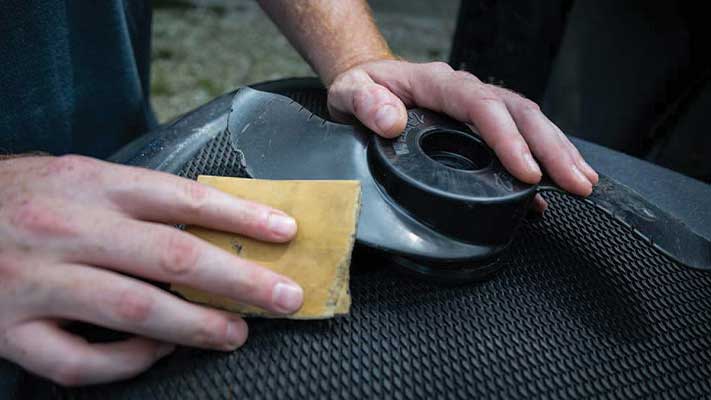
Lavage du moteur électrique
nettoyer son moteur électrique eau douce
Rincez à l’eau clair l’ensemble de votre moteur Minn Kota pour retirer la saleté accumulée pendant votre cession de pêche (idéalement après chaque utilisations). Évitez d’utiliser des produits de nettoyage domestique. Un simple rinçage suffit sur ce type de produit.
nettoyer son moteur électrique mer (riptide)
Tout aussi important que le lavage de votre bateau, il est également important de rincer votre moteur électrique avec de l’eau douce après chaque utilisation et sortie en milieu salin.
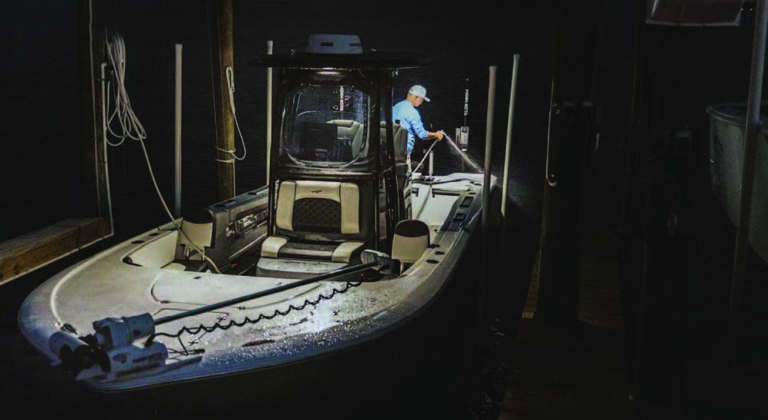
lubrification du moteur électrique
lubrifier son moteur électrique
Pensez à bien lubrifier l’arbre de votre moteur ! Cela peut être fait après avoir nettoyé votre moteur avec de l’eau et une solution de savon doux.
A l’aide d’une bombe de lubrifiant aqueux, appliquez un peu du produit sur un chiffon doux, puis essuyez l’arbre du moteur en composite.
Cette lubrification permet d’assurer un déploiement et un arrimage en douceur de votre moteur, en particulier sur les moteurs Ulterra.

Pensez à lubrifier l’arbre moteur :
- Minn Kota eau douce chaque 3 ou 4 utilisations.
- Minn Kota Riptide (eau salé) après chaque utilisation.
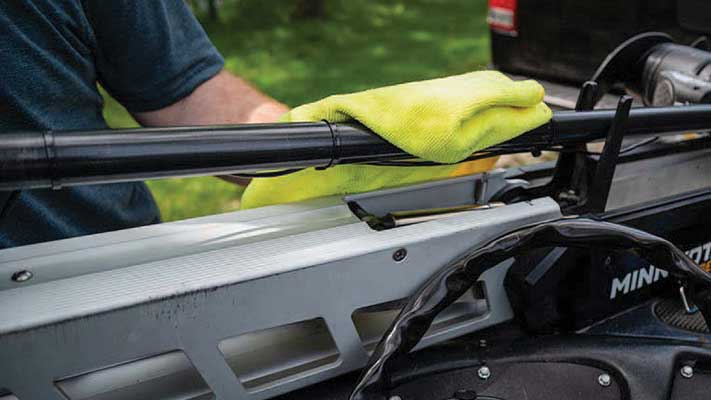
Fixation du moteur électrique
CONTRÔLE DU SERRAGE DES BOULONS DE FIXATION
Les vibrations sont le pire ennemi de la plupart des équipements marins, et lorsque les boulons de montage se desserrent ou qu’une barre stabilisatrice ne tient pas bien sur le pont du bateau, les pièces mobiles du moteur peuvent subir de graves dégâts, surtout lors d’une utilisation sur plan d’eau agité.
Resserrez les boulon et fixation avant et après chaque utilisation.
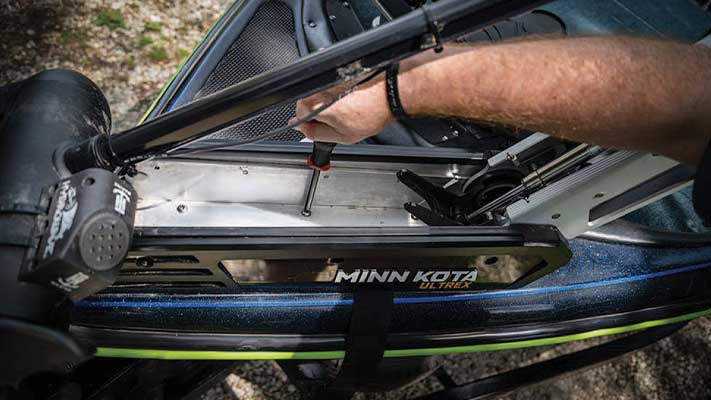
Stockage du moteur électrique
PRÉPARATION À L’ENTREPOSAGE PROLONGÉ
Comment stocker et entreposer son moteur électrique ?
- Nettoyez avec un chiffon doux et un produit type WD40 toutes les parties métalliques du moteur Minn Kota.
- Débrancher le moteur électrique de sa source d’alimentation/batterie avant de le stocker.
- Graisser généreusement les différentes prises avec une graisse silicone.
- Stocker votre moteur dans un endroit sec.
Il fortement recommandé de connecter les batteries à un chargeur de batterie embarqué intelligent.
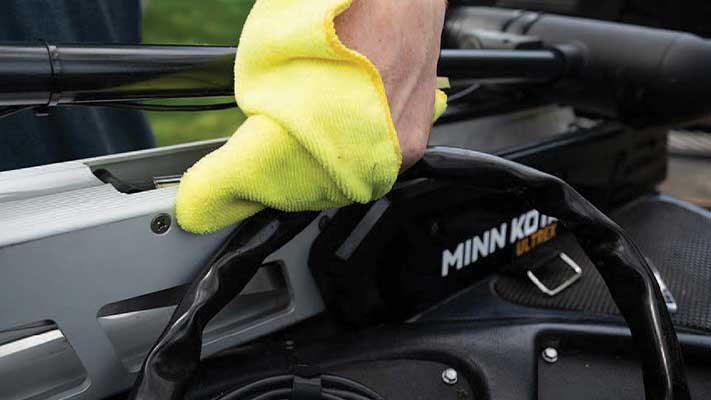
Inspection et gestion du cablage du moteur
GESTION DES CÂBLES DU MOTEUR ÉLECTRIQUE
L’utilisation d’attaches zippées et/ou d’une gaine tressée extensible est un moyen facile et peu coûteux de ranger et arrimer tous les câbles que vous pourriez avoir près de votre moteur avant.
Lors de l’installation du moteur avant Minn Kota, vous devez tenir compte de la longueur des câbles d’alimentation ainsi que le cheminement des câbles de sonde et/ou réseau intégrés au moteur.
Si ces câbles ne sont pas attachés, ils peuvent se coincer à l’intérieur du support et sont susceptibles d’être pincés ou même coupés. C’est à faire Lors de l’installation du moteur sur l’embarcation pour s’assurer que les câbles sont exempts de pincement. Il est nécessaire d’inspecter systématique des câbles à chaque utilisation.
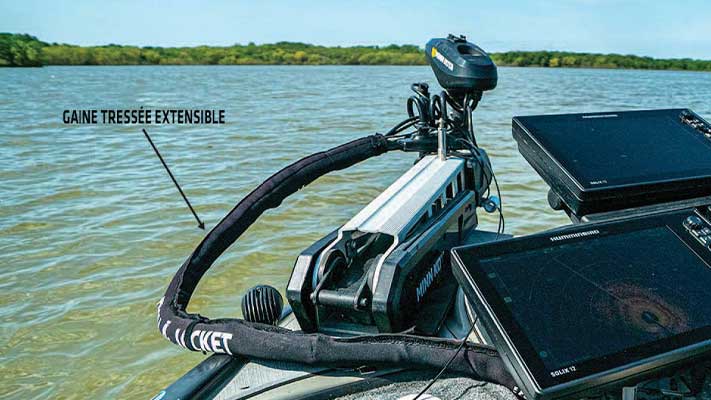
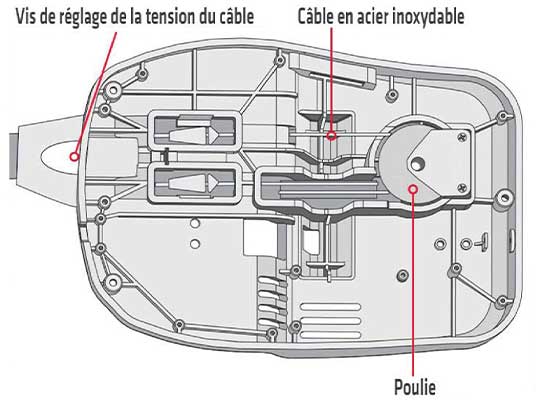
Inspection du câble de direction
La tension du câble de direction est préréglée à l’usine, mais, en utilisation normale, il peut être nécessaire de l’ajuster de temps à autre pour assurer la bonne « sensation » lors des changements de direction notamment pour les modèles Ultrex, Fortrex, Maxxum et Edge.
- Régler la tension en tournant la vis de réglage de la tension du câbles (vis cruciforme) située au bas de la pédale, juste sous le capôt du câble de direction.
- Tourner la vis dans le sens des aiguilles d’une montre pour augmenter la tension et dans le sens inverse des aiguilles d’une montre pour diminuer la tension.
À faire dès que les premiers signes de changement de la tension ou de la réactivité de la pédale.

